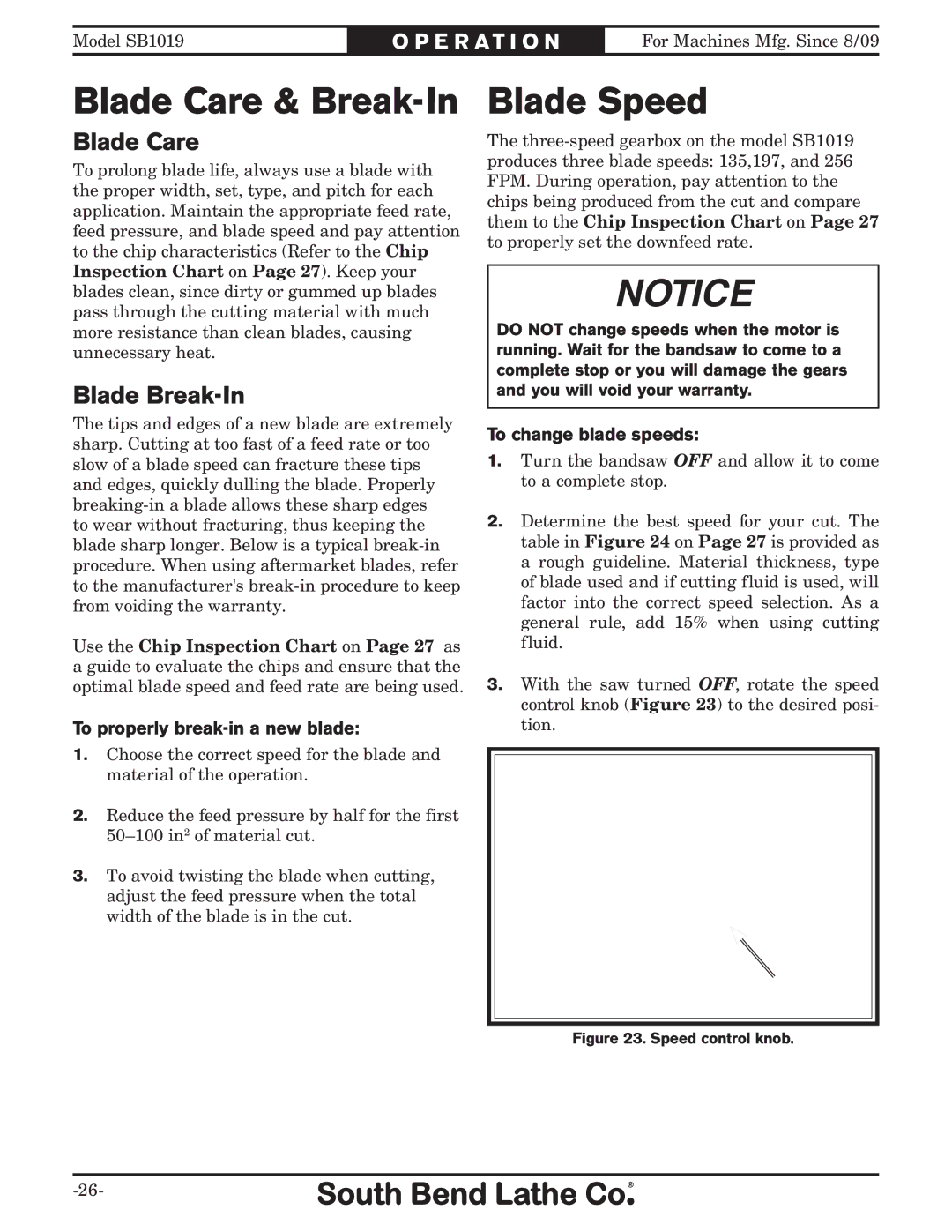
Model SB1019 | O P E R A T I O N | For Machines Mfg. Since 8/09 |
Blade Care & Break-In
Blade Care
To prolong blade life, always use a blade with the proper width, set, type, and pitch for each application. Maintain the appropriate feed rate, feed pressure, and blade speed and pay attention to the chip characteristics (Refer to the Chip Inspection Chart on Page 27). Keep your blades clean, since dirty or gummed up blades pass through the cutting material with much more resistance than clean blades, causing unnecessary heat.
Blade Break-In
The tips and edges of a new blade are extremely sharp. Cutting at too fast of a feed rate or too slow of a blade speed can fracture these tips and edges, quickly dulling the blade. Properly
Use the Chip Inspection Chart on Page 27 as a guide to evaluate the chips and ensure that the optimal blade speed and feed rate are being used.
To properly break-in a new blade:
1.Choose the correct speed for the blade and material of the operation.
2.Reduce the feed pressure by half for the first
3.To avoid twisting the blade when cutting, adjust the feed pressure when the total width of the blade is in the cut.
Blade Speed
The
NOTICE
DO NOT change speeds when the motor is running. Wait for the bandsaw to come to a complete stop or you will damage the gears and you will void your warranty.
To change blade speeds:
1.Turn the bandsaw OFF and allow it to come to a complete stop.
2.Determine the best speed for your cut. The table in Figure 24 on Page 27 is provided as a rough guideline. Material thickness, type of blade used and if cutting fluid is used, will factor into the correct speed selection. As a general rule, add 15% when using cutting fluid.
3.With the saw turned OFF, rotate the speed control knob (Figure 23) to the desired posi- tion.
